Poor performance is a deal-breaker when we talk about user experience. Users have little patience when they face slow load times or choppy interactions. They will abandon your site or app within seconds if it does not deliver the expected responsiveness.
But how much time is exactly needed to make the user leave and never come back? Google has already discovered it with the RIAL method (response, animation, idle, and load – key factors affecting user experience).
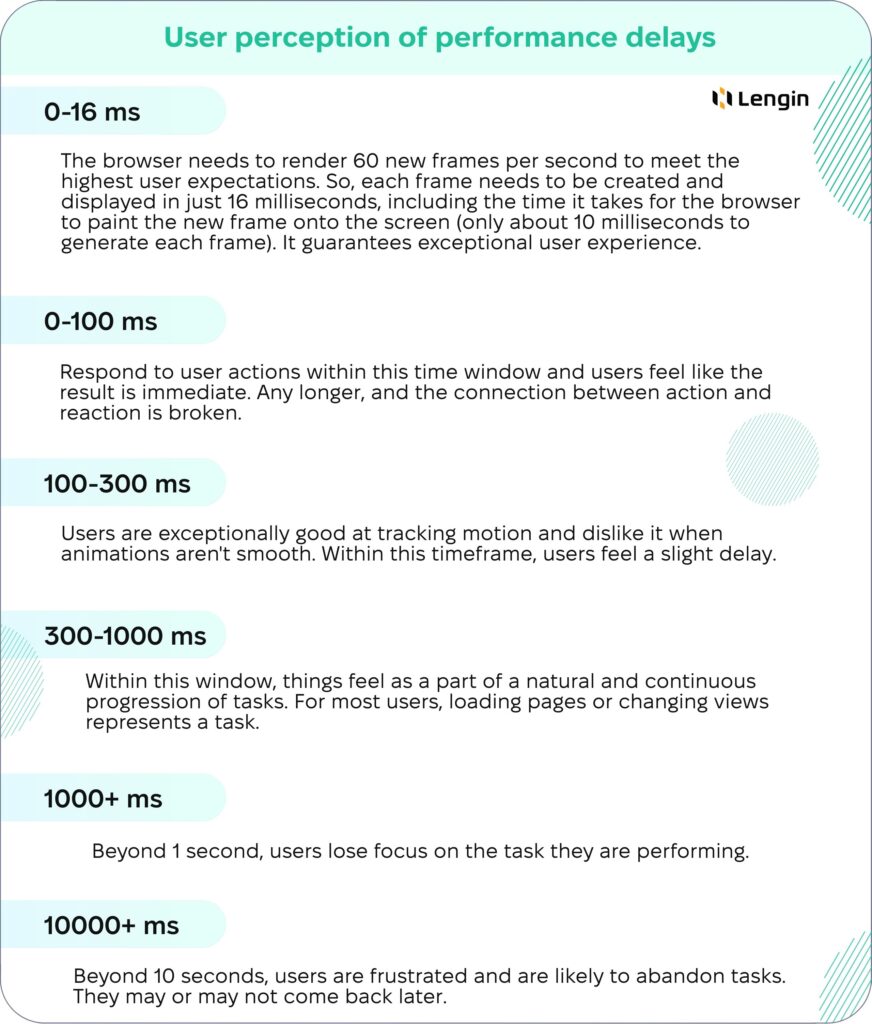
In brief, users are ready to wait as long as they see the progress. Nevertheless, complete interactions initiated by the user within 100 ms for the best user experience with the smoothest performance without unpleasant delays.
Table of Contents:
Key Performance Metrics
Nevertheless, complex logic and broad functionality are usually cumbersome and affect performance. Fortunately, you can measure the performance and improve key criteria for a better user experience. Time to Interactive (TTI), First Contentful Paint (FCP), and Largest Contentful Paint (LCP) are the most common parameters.
- First Contentful Paint (FCP) measures when the first text or image is displayed. Critical for initial load feel.
- Time to Interactive (TTI) marks when a page is fully interactive without long tasks blocking input.
- Largest Contentful Paint (LCP) tracks when the largest element is rendered. Loading large content slower than 1.5s risks causing poor user experience.
Therefore, we gathered the most effective practices of JavaScript code optimization so your users won’t feel any struggles interacting with your real-time application.
Minify and Bundle Files
There are several ways of changing the code for particular purposes. We’ve already talked about obfuscation and what it’s used for. Minification is the opposite way of code manipulation.
Machines don’t care how your code looks. You can write the whole code in one string, and it will work. Minification removes excess characters browsers can ignore, like line breaks, additional spaces, and comments. All of this non-essential formatting increases file size and negatively impacts download speed. Also, minification does not affect functionality.
One more way to minimize the size of the data that the browser has to download is file bundling. File bundling is the process of composing code and dependencies into a single file.
This way, your users will no longer have to wait for multiple JavaScript files to download before interacting with your real-time application. To make these processes faster and easier, use tools like Webpack that automatically minify your code during bundling.
Minifying and file bundling are considered to be some of the most impactful optimizations you can make, but there are many no less effective approaches.
Asynchronous Loading
Synchronous loading means scripts block the parsing of subsequent code like the DOM tree, CSS, etc. This can negatively impact performance.
On the other hand, asynchronous loading allows the JavaScript to be downloaded in parallel with other page resources without blocking the main thread through techniques like defer, async, and module imports.
The defer and async tags are both methods for asynchronous loading of JavaScript. Both of these attributes allow the browser to download and execute the associated scripts asynchronously (in parallel) without blocking other page content.
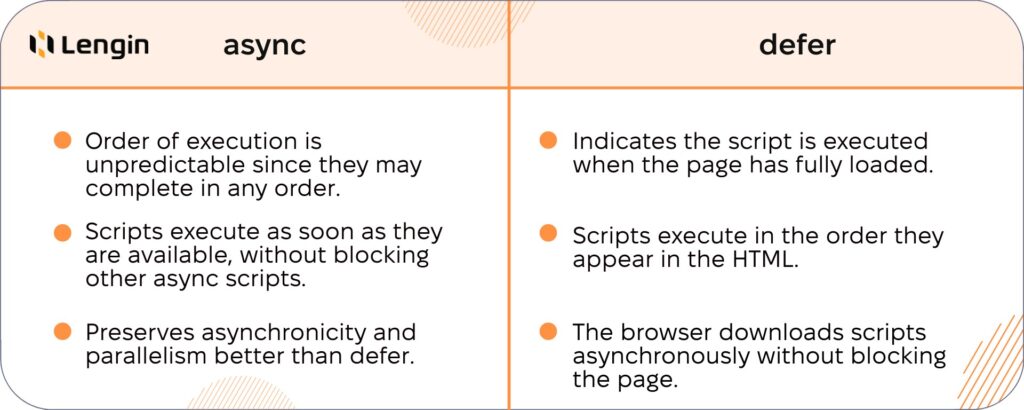
The key difference is that defer executes scripts sequentially after page load, while async provides true parallelism.
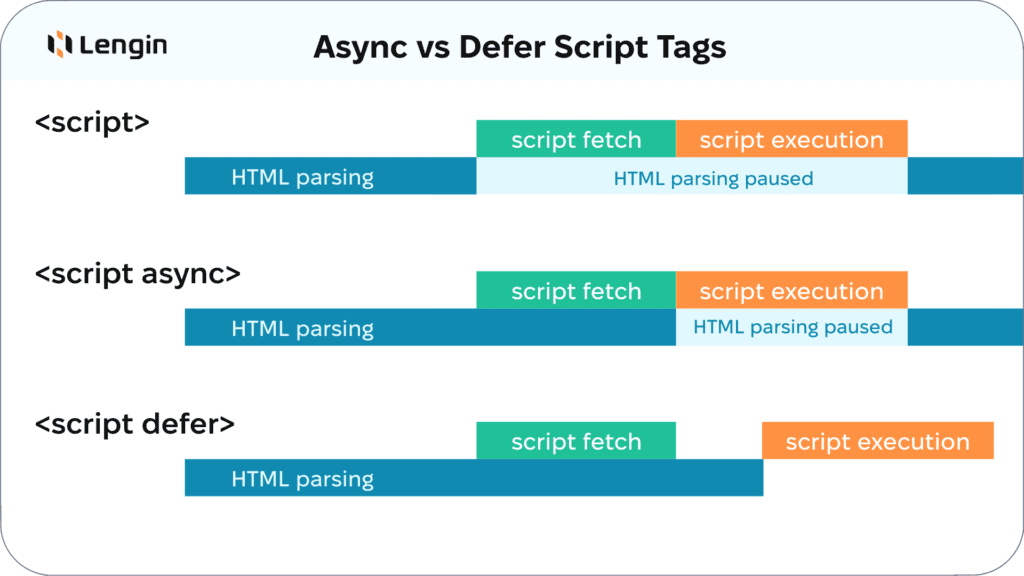
If you can’t choose between them, note that sync is generally recommended when dependencies allow since it provides the maximum benefit to responsiveness and loading time. Defer can also help when some asynchronicity is desired, but order matters.
Prioritize Critical Path Code
Critical Path Code (CPC) is a method of optimizing JavaScript code that is particularly useful for real-time applications with large amounts of data and complex layouts.
The five steps of the CRP are:
- Constructing the Document Object Model (DOM): The browser receives the HTML file and parses it to construct the DOM, a programming API that represents the document’s structure.
- Constructing the CSS Object Model (CSSOM): The browser receives the CSS file and parses it to build the CSSOM, a programming API that represents the styles and layout of the document.
- Layout and Rendering: The browser uses the DOM and CSSOM to calculate the position and size of each element on the page and then renders them on the screen.
- Painting: The browser uses the rendered elements to paint every pixel of the final image on the screen.
- Compositing: The browser combines the painted elements to create the final composite image the user sees.
One of the possible ways is the HTML ‘preload’ link relation – a technique that implies specifying important JavaScript files that should start downloading first in the page load process. This way, you minimize the blocking of the main thread and ensure that users can interact with your application as soon as possible.
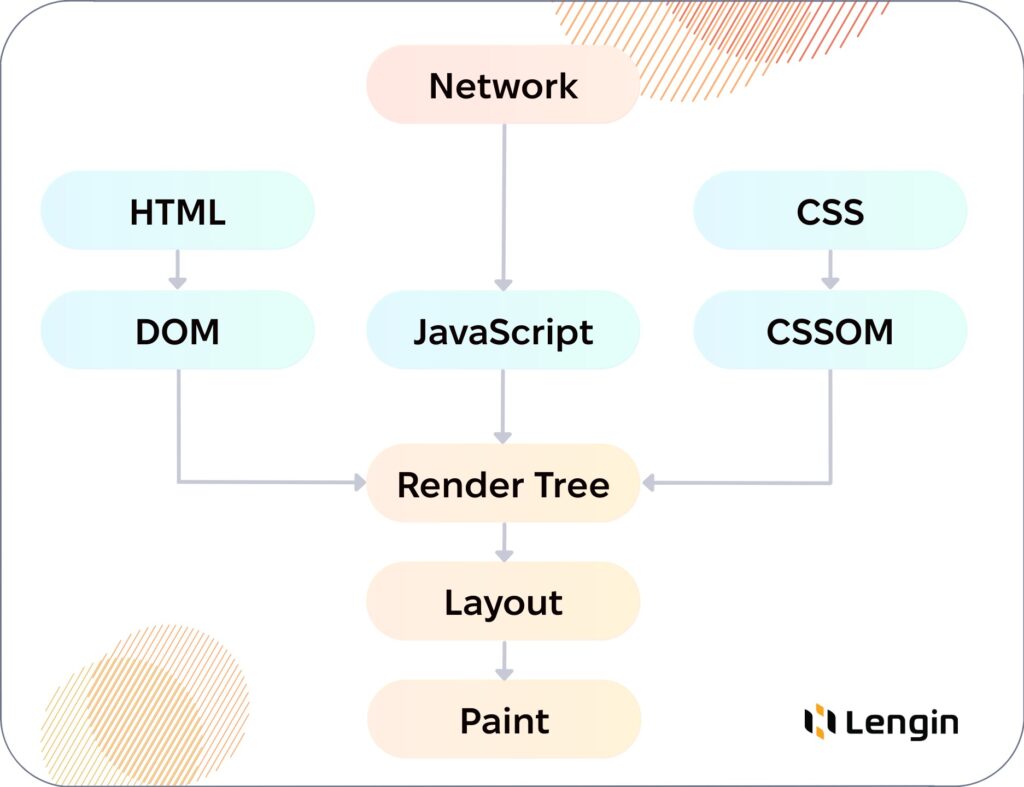
Lazy Load Non-Critical Code
Rather than loading all your JavaScript upfront, consider using a lazy loading approach for non-essential code. The minimal code needed to display initial content takes less time than processing all the pages at a time. Then, lazily load additional code on demand when particular features are required.
As a result, core functionality loads faster while non-critical code loads in the background, and users can see and interact with the page much quicker.
Manage Event Handlers
A common pain while building interactive real-time applications is managing event handlers. Rather often, attaching event listeners causes overhead that negatively impacts responsiveness and overall performance. There is a solution – always remove handlers no longer needed to avoid memory leaks.
One more method is event delegation. Attach a single event listener to the common parent element instead of every child element individually to reduce the number of handlers that need to be processed on user actions.
Optimize scroll events with passive event listeners. On scroll events, the listener, by default, blocks any updates to the page until it finishes. This can cause jank or lagginess during scrolling.
When browsers allow specifying the ‘passive’ option with event listeners. This way browsers can asynchronously handle the event and scrolling updates, free from blocking. In some cases, passive listeners boost scroll performance quite significantly.
Throttling, as a method of optimization event handlers, is primarily used when events fire rapidly, like on scroll or resize. Without throttling, your handler would be called on every single pixel change, which is inefficient.
Throttling works by wrapping the handler’s body in a timeout. It delays execution until scrolling stops briefly and then executes several fast events together with a single call.
Any additional events within that delay are discarded. Your code then runs once with the latest information without being overwhelmed. For example, Lodash and many other libraries provide a throttling utility that handles the timeouts automatically.
A similar method is debouncing, which helps to prevent the application from responding to each event. Instead, it waits a short period to see if the user’s interactions will continue before responding.
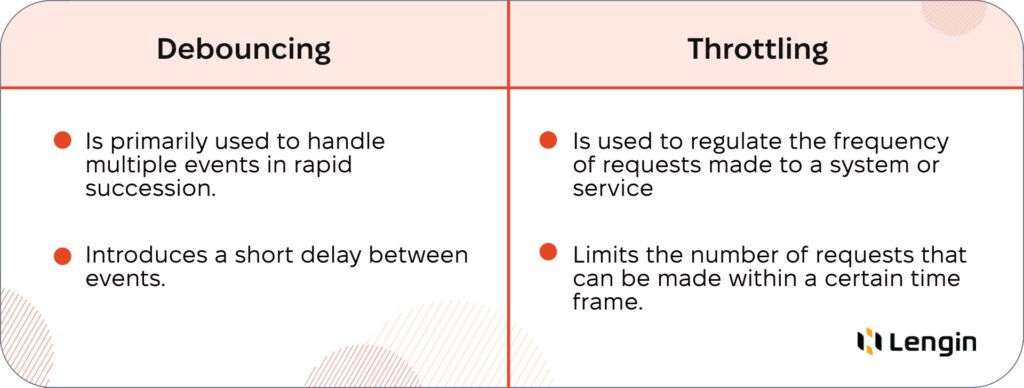
Tips
- You can’t improve what you can’t measure. Use tools like Lighthouse, WebPageTest, or SpeedCurve to monitor the performance.
- Avoid unnecessary re-renders and DOM mutations.
- Cut out any non-essential animations.
- Compress images.
- Implement caching.
Adjust the usage of the libraries. Usually, we use a particular library because of a few necessary features but don’t really need the library’s full functionality. Exclude unused components for faster loading. Also, use libraries that can help reduce the amount of code required to implement certain features. Choose wisely and update them regularly.
Bottom lines
These techniques ensure your application’s responsiveness remains smooth even during lengthy user sessions with frequent interactions. Production deployments of real-time apps are where milliseconds matter.